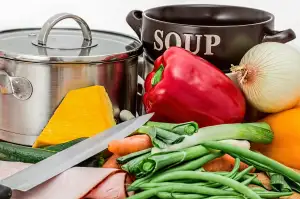Master the Art of Making Homemade Ricotta: A Delicious and Easy Recipe

**Introduction to Homemade Ricotta**
Ricotta, a creamy and versatile Italian cheese, is a staple in many kitchens worldwide. While store-bought ricotta is readily available, making it at home allows you to control the quality of ingredients and customize the flavor to your liking. Homemade ricotta has a fresher taste and smoother texture compared to its commercial counterpart. With just a few simple ingredients and some basic kitchen tools, you can easily master the art of making homemade ricotta right in your own kitchen. Join us on this culinary journey as we explore the process of creating this delicious cheese from scratch.
Ingredients Required for Making Homemade Ricotta
To make homemade ricotta, you will need the following ingredients: whole milk, heavy cream, salt, and lemon juice or white vinegar. The acidity from the lemon juice or vinegar helps to separate the curds from the whey in the milk. It is important to use whole milk for a richer flavor and texture, while heavy cream adds extra creaminess to the ricotta. Salt is essential for enhancing the overall taste of the ricotta. These simple ingredients come together to create a delicious and versatile cheese that can be used in various dishes.
Step-by-Step Instructions for Making Homemade Ricotta
1. Heat milk and cream: In a large pot, combine whole milk and heavy cream over medium heat. Stir occasionally to prevent scorching.
2. Add acid: Once the mixture reaches 185°F (85°C), add lemon juice or white vinegar. Stir gently and let it sit for 10 minutes to allow curds to form.
3. Strain the curds: Line a colander with cheesecloth and place it over a bowl. Carefully pour the mixture into the colander to strain out the curds from the whey.
4. Drain excess liquid: Let the curds drain for about an hour, depending on desired consistency. The longer you drain, the firmer the ricotta will be.
5. Transfer to a container: Once drained, transfer the ricotta to an airtight container and refrigerate until ready to use.
Homemade ricotta is now ready for you to enjoy in various dishes or simply spread on toast with honey for a delightful treat!
Tips and Tricks for Perfecting Your Homemade Ricotta
To perfect your homemade ricotta, ensure you use whole milk for a creamier texture. Adding a touch of heavy cream can enhance richness. Use fresh lemon juice for the ideal balance of acidity. Avoid boiling the mixture to prevent curds from becoming tough. Let the mixture sit undisturbed after adding the acid to allow proper curd formation. Strain the ricotta through a fine mesh sieve or cheesecloth for a smooth consistency. Experiment with different acids like white vinegar or citric acid for unique flavors.
Serving Suggestions and Recipe Ideas Using Homemade Ricotta
1. **Spread on Toast**: Enjoy a simple yet delicious breakfast by spreading homemade ricotta on toasted bread. Drizzle with honey and sprinkle with cinnamon for a sweet twist, or top with fresh tomatoes and basil for a savory option.
2. **In Pasta Dishes**: Add a creamy element to your pasta dishes by mixing homemade ricotta into sauces or using it as a filling for ravioli or lasagna. The rich texture of the ricotta pairs beautifully with pasta.
3. **As a Dip**: Create a flavorful dip by blending homemade ricotta with herbs, garlic, lemon zest, and olive oil. Serve with fresh vegetables, crackers, or breadsticks for a crowd-pleasing appetizer.
4. **In Desserts**: Elevate your desserts by incorporating homemade ricotta into recipes like cheesecakes, cannoli fillings, or even pancakes. Its subtle sweetness and creamy consistency make it a versatile ingredient in sweet treats.
5. **Stuffed Vegetables**: Use homemade ricotta as a filling for stuffed vegetables like bell peppers, zucchinis, or mushrooms. The ricotta adds a creamy contrast to the roasted or grilled vegetables.
Experiment with these serving suggestions and recipe ideas to discover the versatility of homemade ricotta in enhancing both sweet and savory dishes.
Storage and Shelf Life Information for Homemade Ricotta
Homemade ricotta can be stored in an airtight container in the refrigerator for up to 4-5 days. To maintain its freshness and texture, make sure to cover the ricotta with a layer of olive oil before sealing the container. This will help prevent it from drying out. It is not recommended to freeze homemade ricotta as it can alter the texture and taste significantly. If you notice any signs of spoilage such as an off smell or mold, discard the ricotta immediately to avoid foodborne illness. Enjoy your homemade ricotta within the recommended timeframe for the best quality and flavor.
In conclusion, mastering the art of making homemade ricotta is a rewarding and delicious endeavor that can elevate your cooking skills to new heights. By using just a few simple ingredients and following the step-by-step instructions provided, you can create a creamy and flavorful ricotta cheese that far surpasses store-bought options. Remember to experiment with different milk varieties for unique flavor profiles and textures. With proper storage in an airtight container in the refrigerator, homemade ricotta can last up to one week. So why not try your hand at making homemade ricotta today and experience the difference it can make in your culinary creations!
Published: 12. 03. 2024
Category: Recipes



